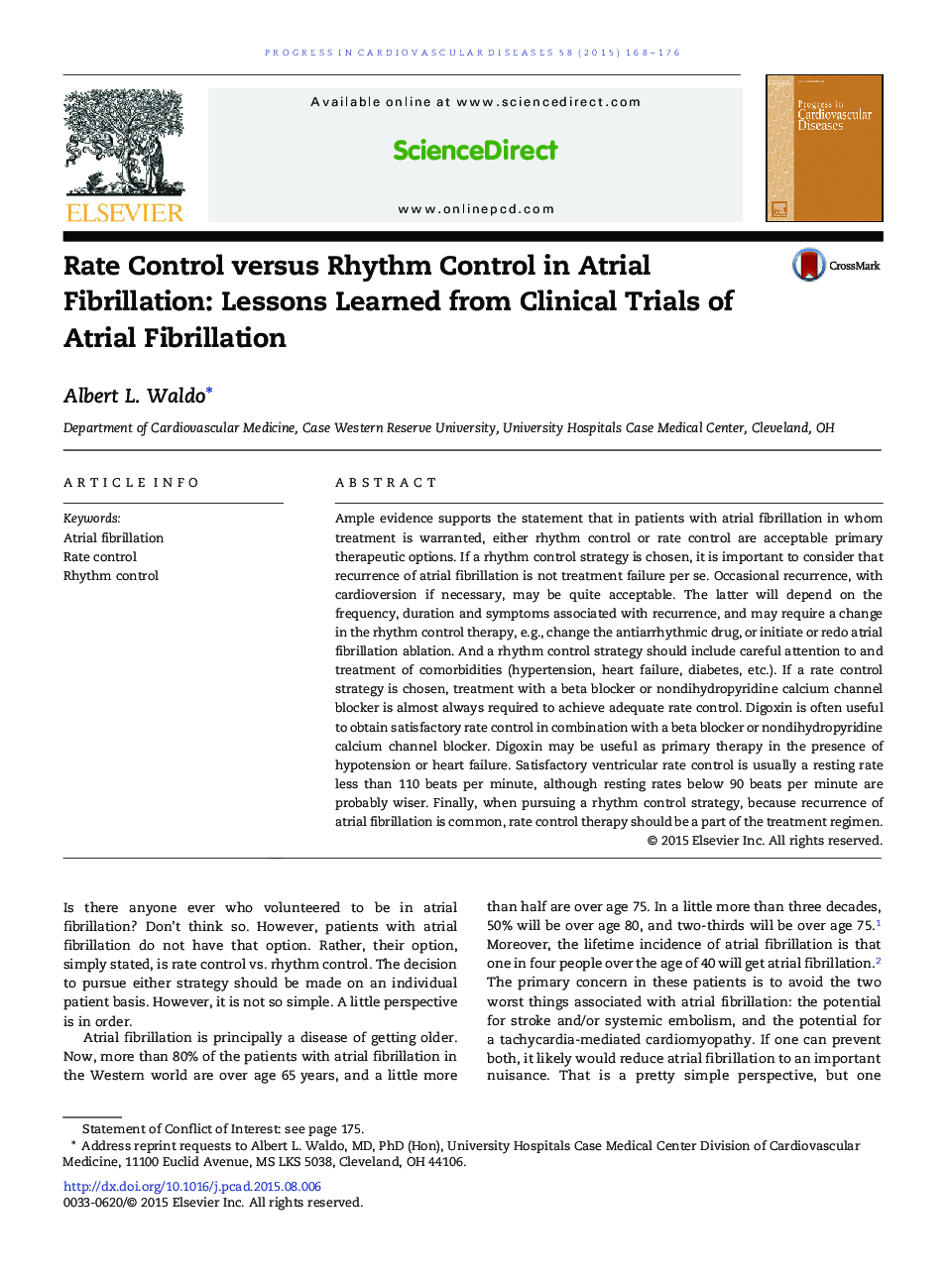| Article ID | Journal | Published Year | Pages | File Type |
|---|---|---|---|---|
| 3006262 | Progress in Cardiovascular Diseases | 2015 | 9 Pages |
Ample evidence supports the statement that in patients with atrial fibrillation in whom treatment is warranted, either rhythm control or rate control are acceptable primary therapeutic options. If a rhythm control strategy is chosen, it is important to consider that recurrence of atrial fibrillation is not treatment failure per se. Occasional recurrence, with cardioversion if necessary, may be quite acceptable. The latter will depend on the frequency, duration and symptoms associated with recurrence, and may require a change in the rhythm control therapy, e.g., change the antiarrhythmic drug, or initiate or redo atrial fibrillation ablation. And a rhythm control strategy should include careful attention to and treatment of comorbidities (hypertension, heart failure, diabetes, etc.). If a rate control strategy is chosen, treatment with a beta blocker or nondihydropyridine calcium channel blocker is almost always required to achieve adequate rate control. Digoxin is often useful to obtain satisfactory rate control in combination with a beta blocker or nondihydropyridine calcium channel blocker. Digoxin may be useful as primary therapy in the presence of hypotension or heart failure. Satisfactory ventricular rate control is usually a resting rate less than 110 beats per minute, although resting rates below 90 beats per minute are probably wiser. Finally, when pursuing a rhythm control strategy, because recurrence of atrial fibrillation is common, rate control therapy should be a part of the treatment regimen.
